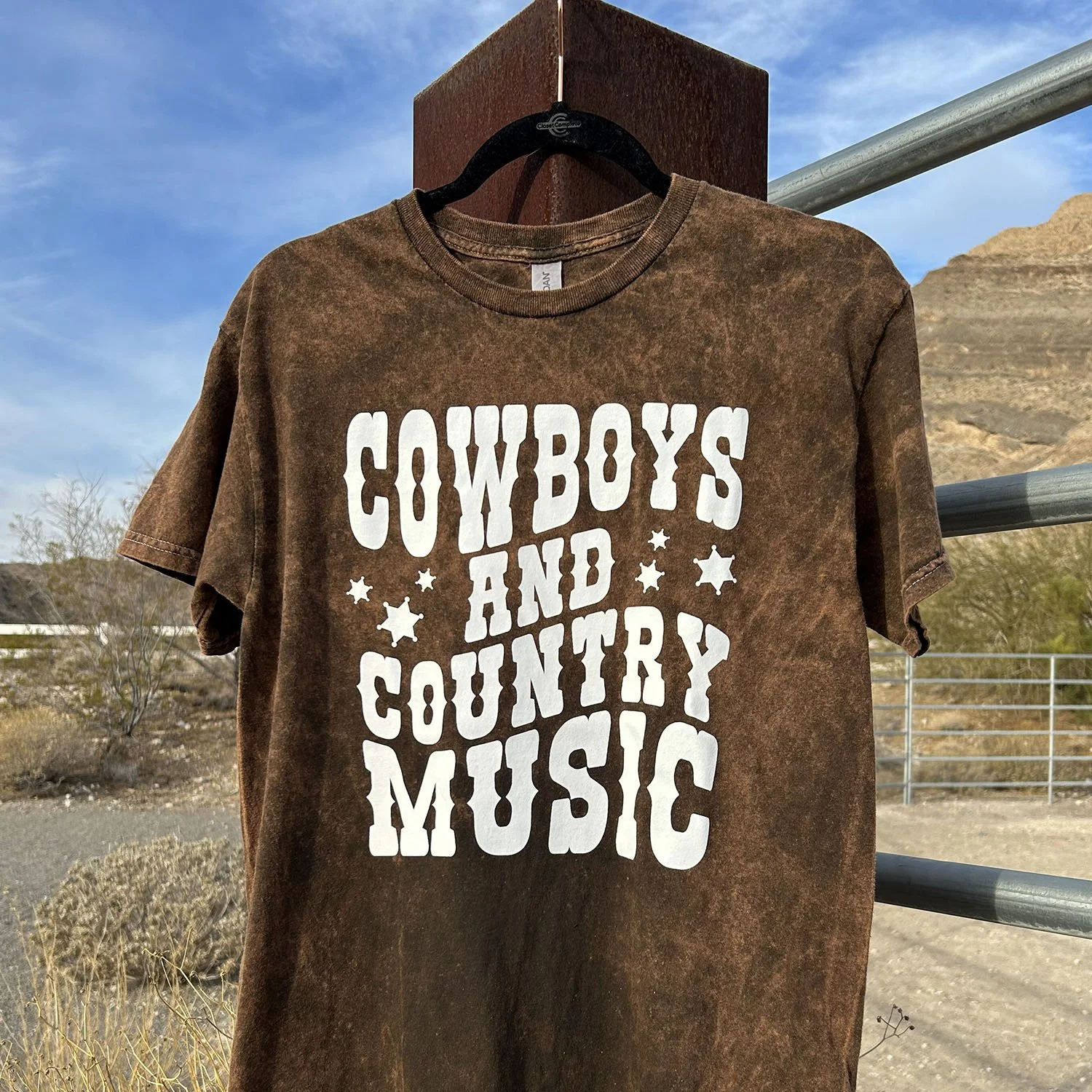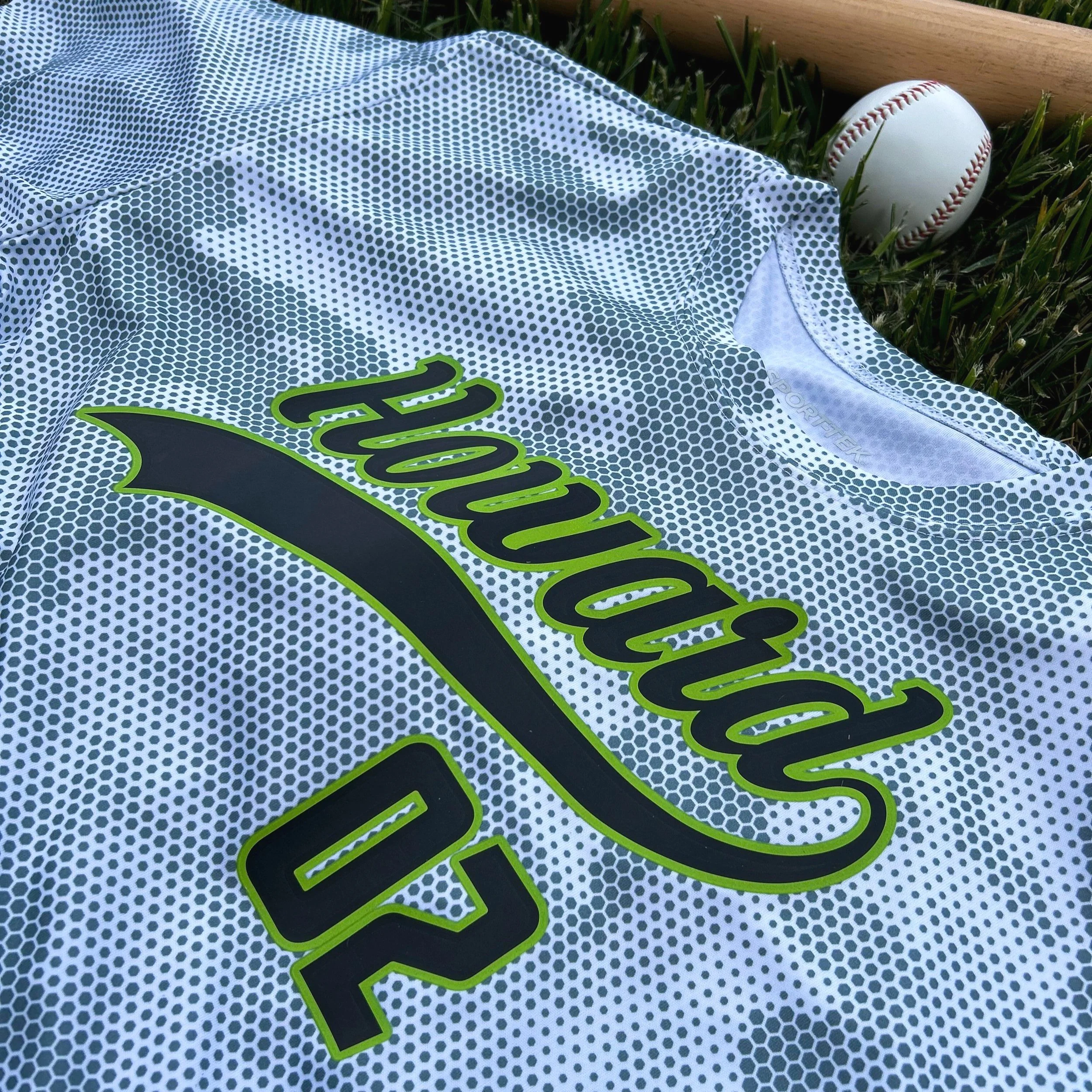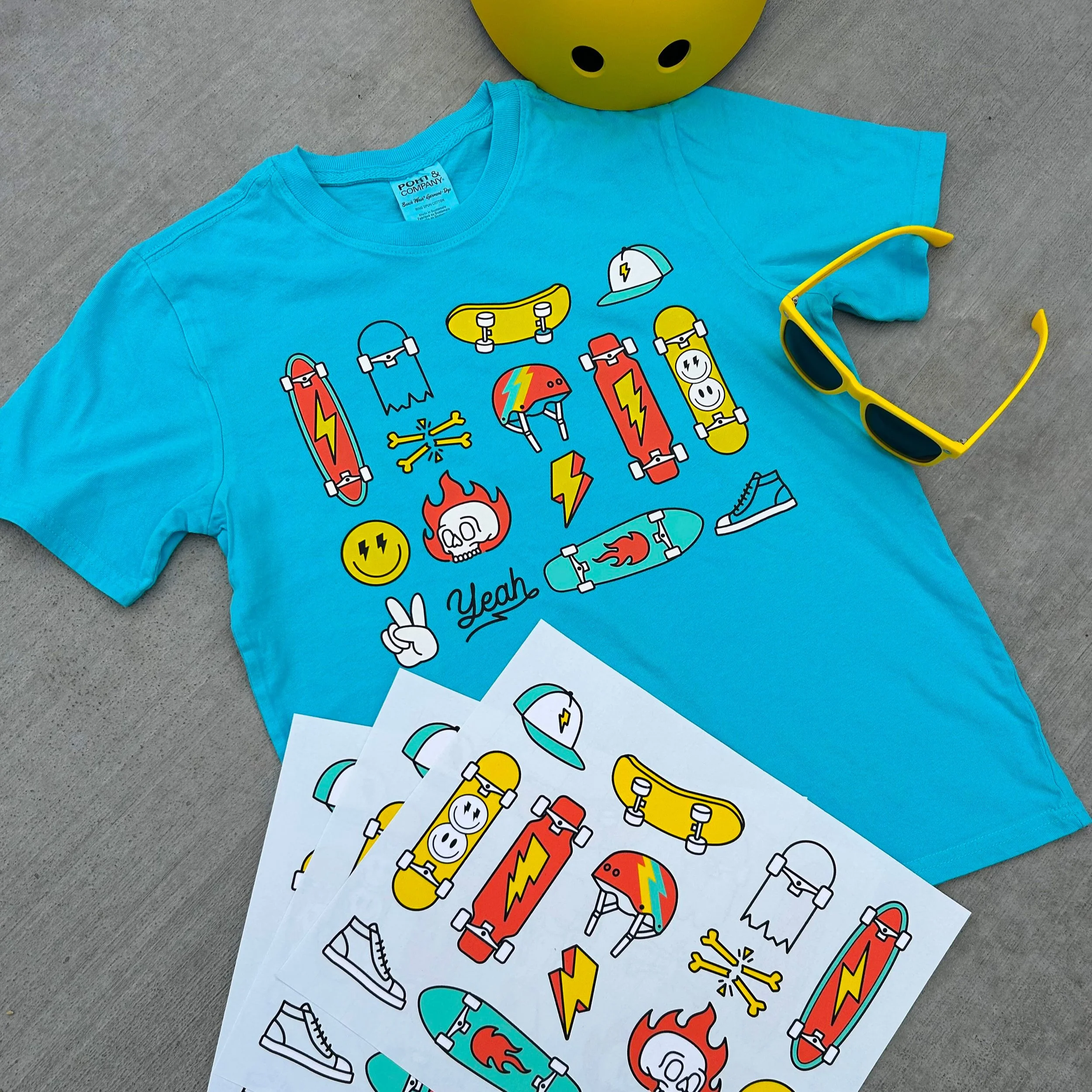Screen Print Transfers vs. DTF Transfers: What’s the Difference?
If you're in the apparel decoration business, chances are you've heard the buzz about DTF (Direct-to-Film) transfers and you know the long-standing reputation of screen print transfers. But what’s the real difference between the two? Which is better for your business, your designs, and your bottom line?
In this guide, we’ll break down the most common - and most critical - questions decorators ask when comparing screen print transfers and DTF. Whether you're new to heat pressing or reevaluating your current supplier, we’ve got answers that will help you make confident decisions.
Product & Print Quality
Which transfer type has a softer feel on the garment - screen print or DTF?
Screen print transfers usually have a softer, more natural feel, especially for single-color or vintage-style prints. DTF can sometimes feel thicker or rubbery, especially on large or solid designs.
Do screen print transfers crack or peel less than DTF over time?
Both transfers are durable when applied correctly, but screen print transfers tend to age better and resist cracking/peeling due to their plastisol ink composition and bond with the fabric.
Which transfer holds up better in the wash?
High-quality screen print transfers can last 75+ washes with no significant degradation. DTF holds up well too, but longevity can vary more based on consumables used in production – films, adhesives, inks, etc.
Does one have better opacity on dark or colored garments?
Screen print transfers typically have better opacity than DTF transfers. DTF may struggle with show-through on certain substrates while the plastisol inks used in screen print transfers offer excellent opacity on both light and dark fabrics.
Can I get brighter or more vibrant colors with screen print or DTF?
Screen print transfers excel in color accuracy and consistency with spot-on color matching options. DTF can achieve vibrant full-color images but may appear more muted depending on press technique and film quality.
Screen print transfers like Howard Multi-Purpose take the “W” on vibrancy and opacity when compared to DTF transfers.
Fabric & Application Compatibility
Which transfer is better for 100% polyester or performance wear?
DTF is more versatile out of the box, but screen print transfers with dye blockers (like colorVIBE Hybrid) are ideal for sublimated poly fabrics to avoid dye migration.
Do I need different heat press settings for screen print vs. DTF?
Yes. Screen print transfers often require higher temperature settings and lower pressure settings to cure, while DTF uses heavy pressure and lower heat to melt the adhesive layer.
Can I use the same heat press for both screen print and DTF?
Technically yes, but you must dial in the time, temperature, and pressure settings for each method. Inconsistent pressure or temperature can ruin either type.
Does one transfer type have more risk of dye migration on sublimated garments?
Yes, DTF is more prone to dye migration since it lacks an ink-based blocking layer. Screen print transfers like colorVIBE Hybrid with added blockers perform better on sublimated or dyed polyesters.
While DTF performs well on performance fabrics, sublimated polyester requires a screen print transfer option with dye-blocking.
Cost, Profit & Business Strategy
Which transfer is more cost-effective to order for small quantities?
DTF wins here. It’s cost-effective at very low quantities, making it appealing for one-offs or small batch jobs.
Is it more profitable to sell garments with screen print transfers or DTF?
Screen print transfers can be more profitable when marketed as a premium decoration method due to their higher-end finish and feel - especially in medium-large runs.
Can I charge more for a garment with screen print vs. DTF and why?
Yes. Consumers often perceive screen print finishes as higher quality, similar to traditional retail screen printing. Positioning is key.
Are screen print transfers worth the higher cost for multi-color designs?
If color vibrancy, opacity, and consistency matter for your brand or client, then absolutely. You can offset the cost by pricing the product accordingly.
Artwork & Design Capabilities
Which transfer allows for photorealistic or highly detailed artwork?
DTF is ideal for full-color photo-realistic prints or gradients without any setup hassle. However, screen print transfers can use halftones for impressive, simulated effects.
Can I use gradients or halftones with screen print transfers?
Yes! Halftones allow screen print transfers to mimic gradients and shadows, but results depend on art setup and production methods.
Is there a limit on how many colors I can use with screen print transfers?
Typically yes, most screen print transfer providers max out around 6–10 spot colors with some only producing a max of 3 colors. DTF is technically unlimited in color count.
High-quality screen print transfers like Howard Multi-Purpose can capture 3+ colors with a premium retail look and feel.
Workflow & Production
Which transfer type is easier for beginners to apply correctly?
DTF has a lower learning curve, especially with forgiving application windows. However, screen print transfers reward good heat press technique with professional results.
Which is better for batch production or high-volume orders?
Screen print transfers are fast, consistent, and cost-efficient for medium-large runs. There is no second press required for screen print transfers which speeds up production at a higher volume.
Can I use gang sheets with both screen print and DTF?
Yes. But screen print transfers require more precision when designing gang sheets because of cut lines and required spacing, while DTF often allows for easier manual trimming. As a rule of thumb, we typically suggest .5” minimum spacing for DTF and .75” minimum spacing for screen print transfers.
What’s the turnaround time comparison between ordering screen print and DTF transfers?
Both DTF and screen print transfers offer a speedy delivery window with many suppliers shipping orders in just 24-48 hours.
Final Thoughts
When it comes to choosing between screen print transfers and DTF transfers, there’s no “one size fits all” answer, but there is a right fit for your business.
➤ Screen print transfers deliver unmatched feel, color reliability, and long-term value
➤ DTF offers fast, flexible, low-commitment printing
Decorators who understand both can build a business that’s not just efficient but elite.



